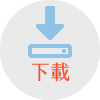簡易檢索 / 詳目顯示
| 研究生: |
曾華盛 Hua-Sheng Tseng |
|---|---|
| 論文名稱: |
中小型貨車之技術發展與策略規劃 Technological Development and Strategies on Light-duty Trucks and Medium-duty Trucks |
| 指導教授: |
陳俊男
Chun-Nan Chen 鄭正元 Jeng-Ywan Jeng |
| 口試委員: |
陳俊男
Chun-Nan Chen 鄭正元 Jeng-Ywan Jeng 陳亮光 Liang-Kuang Chen |
| 學位類別: |
碩士 Master |
| 系所名稱: |
工程學院 - 高階科技研發碩士學位學程 Executive Master of Research and Development |
| 論文出版年: | 2022 |
| 畢業學年度: | 110 |
| 語文別: | 中文 |
| 論文頁數: | 60 |
| 中文關鍵詞: | 策略 、規劃 、貨車 、車輛 、電動車 、柴油 |
| 外文關鍵詞: | strategy, truck, vehicle, diesel, 4p, EV |
| 相關次數: | 點閱:252 下載:4 |
| 分享至: |
| 查詢本校圖書館目錄 查詢臺灣博碩士論文知識加值系統 勘誤回報 |
1908年Ford開始以創新生產線的方式大量生產Model T,汽車品質不僅大幅提升且價格低廉,讓汽車成為社會大眾實用的交通工具,奠定了奧圖循環引擎(Otto cycle engine)在汽車產業的地位。嗣後,Benz發明預燃室柴油引擎(OB 2 prechamber diesel),有效減少爆震,讓柴油引擎可以穩定的安裝在貨車上,且其燃油費用大幅減少86%。1923年5噸貨車上市,立即吸引市場的青睞,奠定了柴油循環引擎(Diesel cycle engine)在貨車市場的地位。
長久以來台灣汽車市場以總重3.5噸為分界(2020年放寬到5噸),3.5噸以下為小貨車,3.5噸以上為大貨車,因一般民眾擁有「小型車普通駕駛執照」,僅能駕駛小貨車,車輛製造廠為迎合市場需求,將5噸中型貨車降噸到3.5噸,提供耐載重的貨車,造就了獨特的3.5噸小貨車市場。由於貨車屬生財工具,穩定性與耐用性為車主首要考量因素,也加大了車主的品質忠誠度,若車主對使用中的3.5噸小貨車覺得滿意,未來升級成大貨車也會以原品牌為優先考量,故3.5噸小貨車市場為大貨車的前哨站。
3.5噸小貨車市場中,F品牌 、H品牌 、I品牌 三家日系品牌合計市占率超過90%,形成寡占市場。其中F品牌 、H品牌 二家長期分占第一或第二名,I品牌 則穩定保住第三名。但是,2011年起,政府開始推汽車動電動化,電動小客車與電動大客車逐漸興起,貨車市場也開始走向電動化,除了柴油引擎車,也有油電混合動力車(HEV)和純電動車(BEV)。而公共運輸的電動巴士,在政府的補助下,純電動巴士也逐漸興起,原有的柴油巴士,將逐漸汰換成電動巴士。
因應政府法規科技的進步,企業的經營必需訂定經營方針,擬定策略規劃,推出符合市場需求的產品,再依市場變化持續修正方向,確保產品競爭力,才能存續於市場。本文主要探討台灣中小型貨車之產品技術發展及策略規劃,利用總體環境掃描分析、五力分析、VRIO分析、SWOT分析、安索夫矩陣、BCG矩陣、第二曲線等方法,以及梳理貨車產業的歷史脈絡,綜合評估,研擬策略規劃並尋找利基。期能為企業在激烈的市場競爭中,找到產業方向,永續發展。此研究方法除了應用在汽車產業,亦可套用於其他利基產業,以「廣積糧」為企業獲得利潤,建立差異化之競爭優勢;並以「築高牆」來防止競爭者模仿,延長生命週期,保有穩定的營收,在小眾利基產業中,找出藍海市場。
In 1908, Ford made the assembly line production of the Model T improving the quality and lowering the price and which made greater mobility for Americans. The gasoline engine with model T was popular broadly and which made Otto cycle engine success in the automotive industry. In 1923, Benz installed OB2 prechamber diesel engine on a 5-ton truck and which effectively reduced knocking and kept steady. Its fuel cost was greatly saved by 86% in the period. This OB2 Diesel engine has become a successful model in the truck industry.
For a long time, regulations in Taiwan’s automobile have specified a standard volume on 3.5-ton. The small vehicle is defined as volume of and below 3.5-ton, and comparatively, the large vehicle is above 3.5-ton. To meet the market demand, supplies and producers reduce 5-ton medium-duty trucks to 3.5-ton as light-duty trucks and which also creating a specific 3.5-ton small truck market.
The specific 3.5-ton truck market has long been occupied by three Japanese brand firms. However, the market structure has begun to change because the government policies have been towards electrification since 2011. The model of BEV, HEV, and FCEV has been gradually emerging in auto markets. It is believed that the structure of truck market will also be changed due to electrification and new competitors will appear and surpass soon.
In response to the updated regulations and technological progress, enterprises must adopt innovative business policies and strategic plans, and offer appropriate products to meet demands.
The topics of this paper mainly on the product technology development and strategic planning between Taiwan's light-duty trucks and medium-duty trucks, and the product competitiveness analysis methods including PEST analysis, Porter's five forces analysis, VRIO analysis, SWOT analysis, Ansoff matrix, BCG matrix, Product Life Cycle, and The Second Curve etc. are adopted. The methodology which adopted in this paper can be applied to other auto products. Hopefully, this paper will make some contribution to auto enterprises toward niche and profit.
英文部份:
Charles Handy 2020, “The second curve: thoughts on reinventing society”第二曲線:社會再造的新思維(齊若蘭譯)。台北市:遠見天下文化。(原著出版於2015)
Jay Barney 1991, “Firm Resources and Sustained Competitive, Advantage” Journal of Management Vol. 17 No.1, p99-120.
Jay Barney 1995, “Looking inside for Competitive Advantage” The Academy of Management Executive (1993-2005) Vol. 9, No. 4 (Nov., 1995), pp. 49-61 (13 pages)
Daimler Trucks (2021). Retrieved September 30, 2021, from https://media.daimler.com/marsMediaSite/en/instance/ko/Classic.xhtml?oid=9265811
Isuzu Motors Limited. (2021). Technology. Retrieved August 8,2021, from https://www.isuzu.co.jp/world/technology/clean/index.html
Isuzu Motors Limited. (2021). トラックゼミナール. Retrieved August 8,2021, from https://www.isuzu.co.jp/semi/truck/01_2.html
Iveco(2021). PTO – Power take-offs. Retrieved August 8,2021, from https://www.iveco.com/southafrica/products/pages/new-trakker-pto.aspx
Mitsubishi Fuso Truck and Bus Corporation(2021). Products. Retrieved August 8,2021, from https://www.mitsubishi-fuso.com/ja/products/
United Nations Framework Convention on Climate Change (2022). The Paris Agreement. Retrieved March 1,2022, from https://unfccc.int/process-and-meetings/the-paris-agreement/the-paris-agreement
Wikipedia(2021), “VIRO” Retrieved March 1,2022, from https://en.wikipedia.org/wiki/VRIO
Wikipedia(2021), “產品生命週期” Retrieved March 1,2022, from https://zh.wikipedia.org/wiki/%E4%BA%A7%E5%93%81%E7%94%9F%E5%91%BD%E5%91%A8%E6%9C%9F
中文部份:
于國孝(2019):台灣電動車產業發展個案分析。台北市,臺灣科技大學。
王芳、夏軍(2021):電動文車動力電池系統設計與製造技術。北京市:科學出版社。
胡家勝、薛博文(2017):電動車。台北市:滄海圖書資訊。
徐國卿、鄭春花、張艷輝、徐坤(2017):電動汽車-能量轉換與動力控制。北京市:科學出版社。
麻友良(2017):新能源汽車動力電池技術。北京市:北京大學出版社。
鄒才能(2018):新時代能源革命與油公司轉型戰略。北京市:北京石油管理干部学院学报 ; 2018年 04期 (2018 / 09 / 13)。
廖益均(2021):大客車市場分析。新北市:貨幣觀測與信用評等;2021年第148期(2021 / 3 / 5)。
臺灣省公路局(1999):公路局五十二年專刊。台北市:臺灣省公路局。
行政院經濟建設委員會(2013):台灣經濟發展歷程與策略。台北市:行政院經濟建設委員會。
中華經濟研究院WTO及RTA中心(2013):補貼及平衡措施。2022年2月7日,取自https://web.wtocenter.org.tw/Node.aspx?id=221
交通部(2019):交通新聞稿 - 交通部提醒使用中小貨車車主可儘速辦理提升載重量變更登記。2021年8月8日,取自 https://www.motc.gov.tw/ch/home.jsp?id=14&parentpath=0,2&mcustomize=news_view.jsp&dataserno=201912130005&toolsflag=Y
交通部(2021):道路交通安全規則。2021年8月8日,取自 https://motclaw.motc.gov.tw/webMotcLaw2018/Law/ArticleContent?type=1&LawID=E0055119
交通部公路總局(2022):統計查詢網。2022年2月7日https://stat.thb.gov.tw/hb01/webMain.aspx?sys=100&funid=11200
行政院(2017):空氣污染防制行動方案(紅害減半大作戰)。2022年2月7日,取自https://www.ey.gov.tw/Page/448DE008087A1971/5638596f-c460-4a12-9e62-d623d34f67d1
行政院環境保護署(2003):移動污染源空氣污染物排放標準。2021年8月8日,取自 https://oaout.epa.gov.tw/law/LawContent.aspx?id=FL015347&kw=%e7%a7%bb%e5%8b%95%e6%b1%a1%e6%9f%93%e6%ba%90%e7%a9%ba%e6%b0%a3%e6%b1%a1%e6%9f%93%e7%89%a9%e6%8e%92%e6%94%be%e6%a8%99%e6%ba%96
行政院環境保護署(2020):大型柴油車汰舊換新補助辦法。2021年8月8日,取自 https://oaout.epa.gov.tw/law/LawContent.aspx?id=GL006975
行政院環境保護署(2020):移動污染源空氣污染物排放標準。2021年8月8日,取自 https://oaout.epa.gov.tw/law/LawContent.aspx?id=FL015347
沈美幸,中時新聞網(2022):士電首季營運報喜又具電動車題材。2022年5月1日,取自https://www.chinatimes.com/realtimenews/20220421002604-260410?chdtv
財政部(2016):中古汽機車報廢或出口換購新車減徵退還新車貨物稅辦法。2022年2月7日,取自https://law-out.mof.gov.tw/LawContentSource.aspx?id=GL010079#lawmenu
財政部關務署(2021):海關進口稅則資料。2021年8月8日,取自 https://web.customs.gov.tw/singlehtml/1205?cntId=cus1_112173_1205
財團法人車輛安全審驗中心(2021)。車輛型式安全審驗管理辦法。2021年2月7日,取自https://www.vscc.org.tw/Home/List/10
國家發展委員會(2022):臺灣2050淨零排放路徑。2022年4月5日,取自https://www.ndc.gov.tw/Content_List.aspx?n=FD76ECBAE77D9811&upn=5CE3D7B70507FB38
張瑞益,經濟日報(2022):東元電動車業務將躍進。2022年5月1日,取自https://udn.com/news/story/7252/6222631
監理法規檢索系統(2020):交通部電動大客車示範計畫補助作業要點。2022年2月7日,取自https://www.mvdis.gov.tw/webMvdisLaw/LawContent.aspx?LawID=I0197000
環境保護署(2015):溫室氣體減量及管理法。2022年2月7日,取自https://law.moj.gov.tw/LawClass/LawAll.aspx?pcode=G0340140
